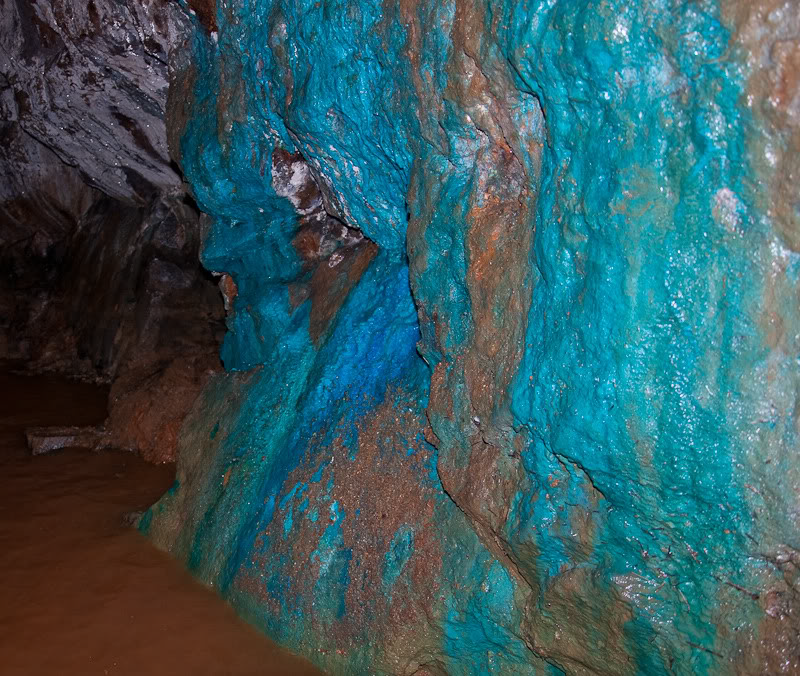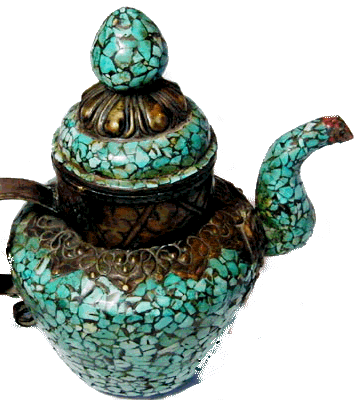
A cave wall in Cornwall, UK.

Set in lacquer / resin
Turquoise
Turquoise is the stone of December and Sagittarius.
Associated with copper deposits, turquoise can be found in many areas of the world, including on the cliff faces of Cornwall, where the rock is stained a beautiful intense blue.

Wire wrapped 6mm Chinese Turquoise
The green-blue colour from China is a personal favourite.
The best quality has always been associated with Persia, where the paler blue is found. Persia was, for thousands of years, the source of this high quality stone, however in recent years Arizona, USA has become a major exporter of 'Persian Blue'/'Sleeping Beauty' turquoise.
Found in the tomb of the several Egyptian tombs including that of Queen Zer, turquoise is a talisman which brings good fortune and brings love, harmony and riches to a marriage.
Apache warriors and hunters wore turquoise to ensure a straight aim, but the Aztecs reserved it for their gods. The Navajo believed it was a piece of sky which had fallen to earth.
Turquoise probably came to Europe through the crusades and was named after the French for Turkey, where the trade routes merged, as it was thought that Turkey was the country of origin.
As turquoise is considered so precious, the fragments left from stone cutting are often set in resin to create a mosaic covering, likewise beads are often stabilised in resin, which helps prevent the colour from fading.
| Latest Trends | Ordering Information | debbie@silkpixie.com | Delivery & Returns |


